
How to Use Mini Audio Amplifier 5W: Examples, Pinouts, and Specs
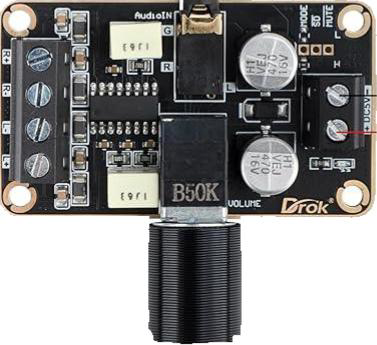
 Design with Mini Audio Amplifier 5W in Cirkit Designer
Design with Mini Audio Amplifier 5W in Cirkit DesignerIntroduction
The Mini Audio Amplifier 5W (DROK PAM8406) is a compact and efficient audio amplifier designed to boost audio signals and drive small speakers. With a power output of up to 5 watts, this amplifier is ideal for applications requiring enhanced sound output in a small form factor. It operates with high efficiency and low distortion, making it suitable for portable audio devices, DIY audio projects, and embedded systems.
Explore Projects Built with Mini Audio Amplifier 5W
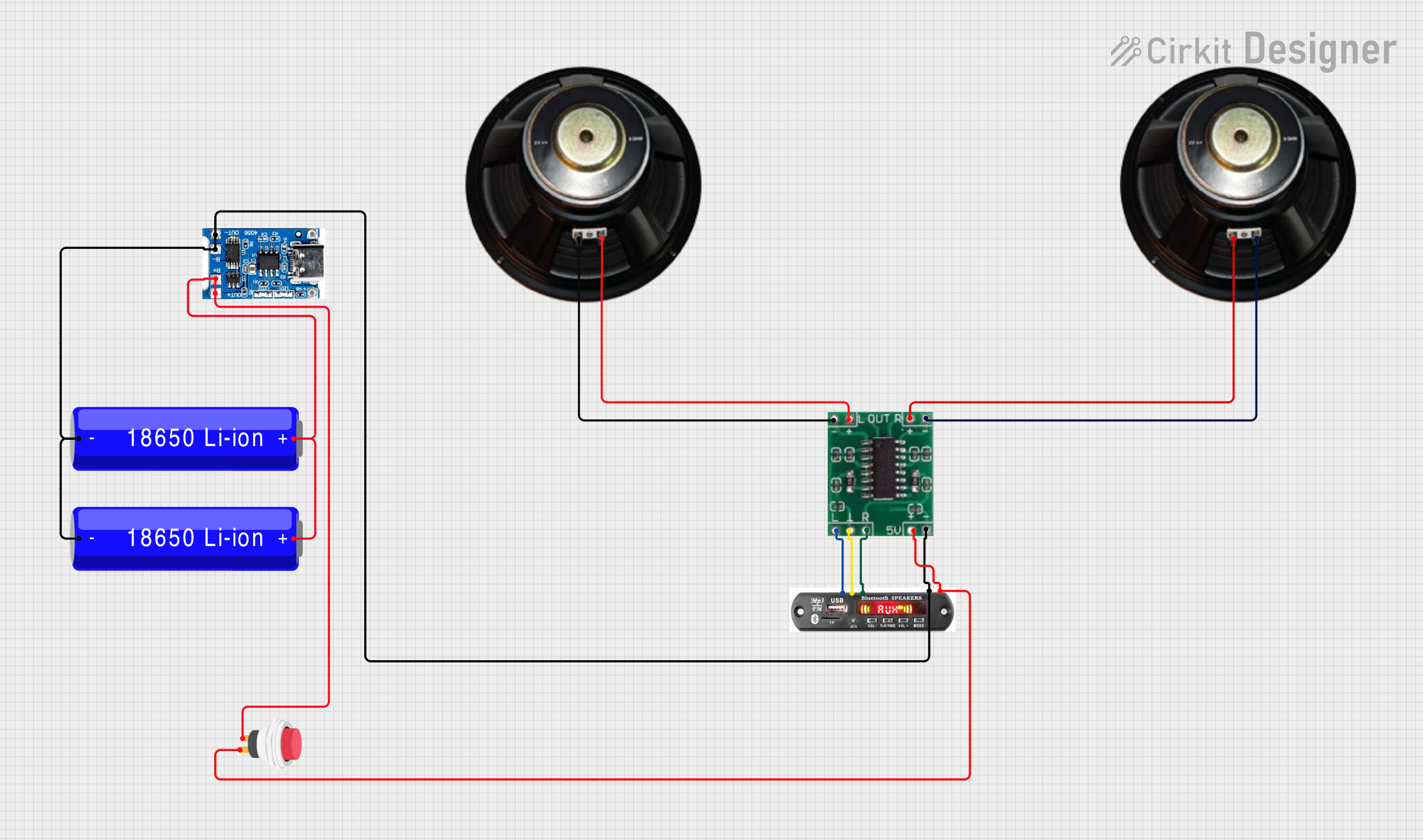
 Open Project in Cirkit Designer
Open Project in Cirkit Designer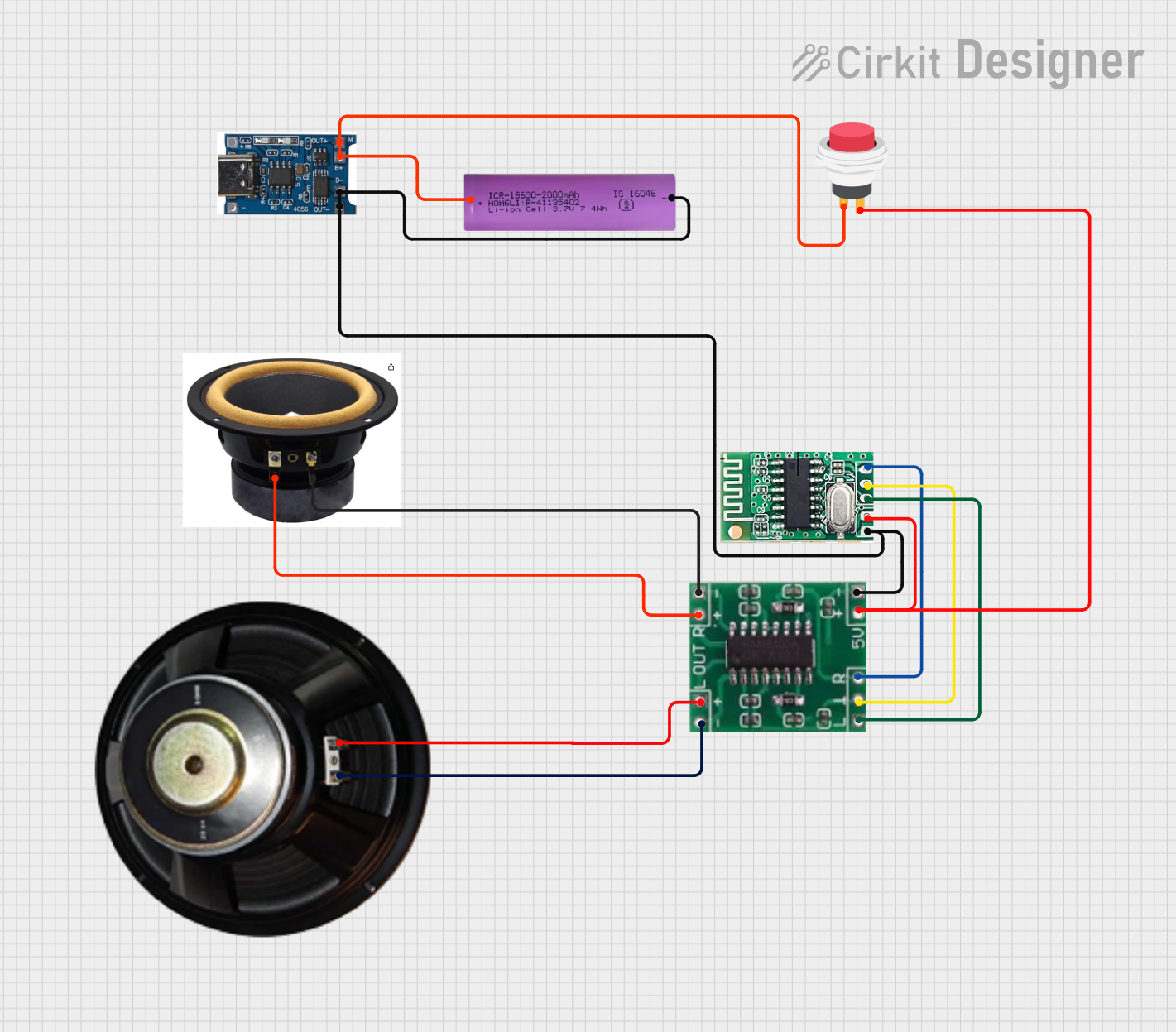
 Open Project in Cirkit Designer
Open Project in Cirkit Designer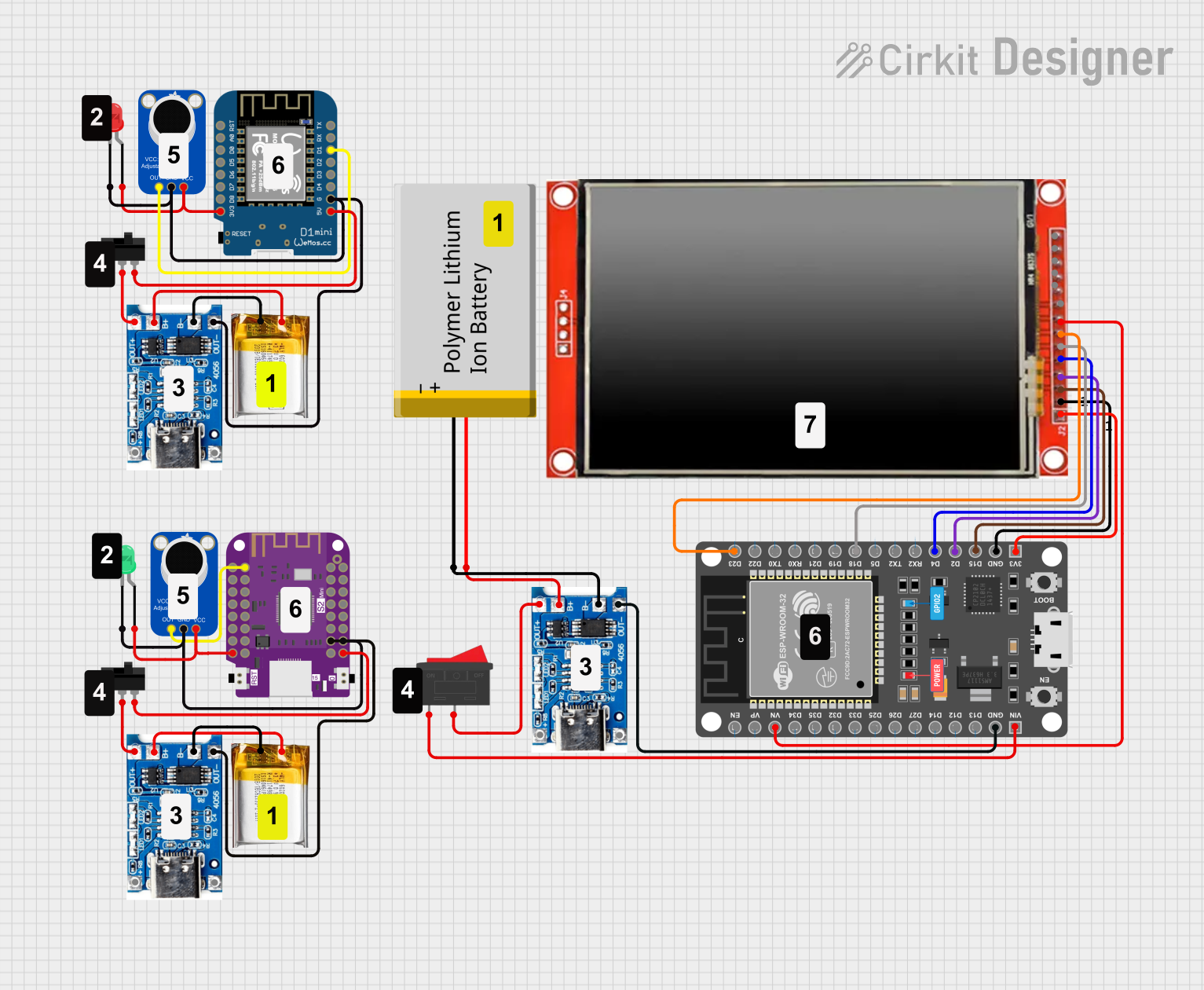
 Open Project in Cirkit Designer
Open Project in Cirkit Designer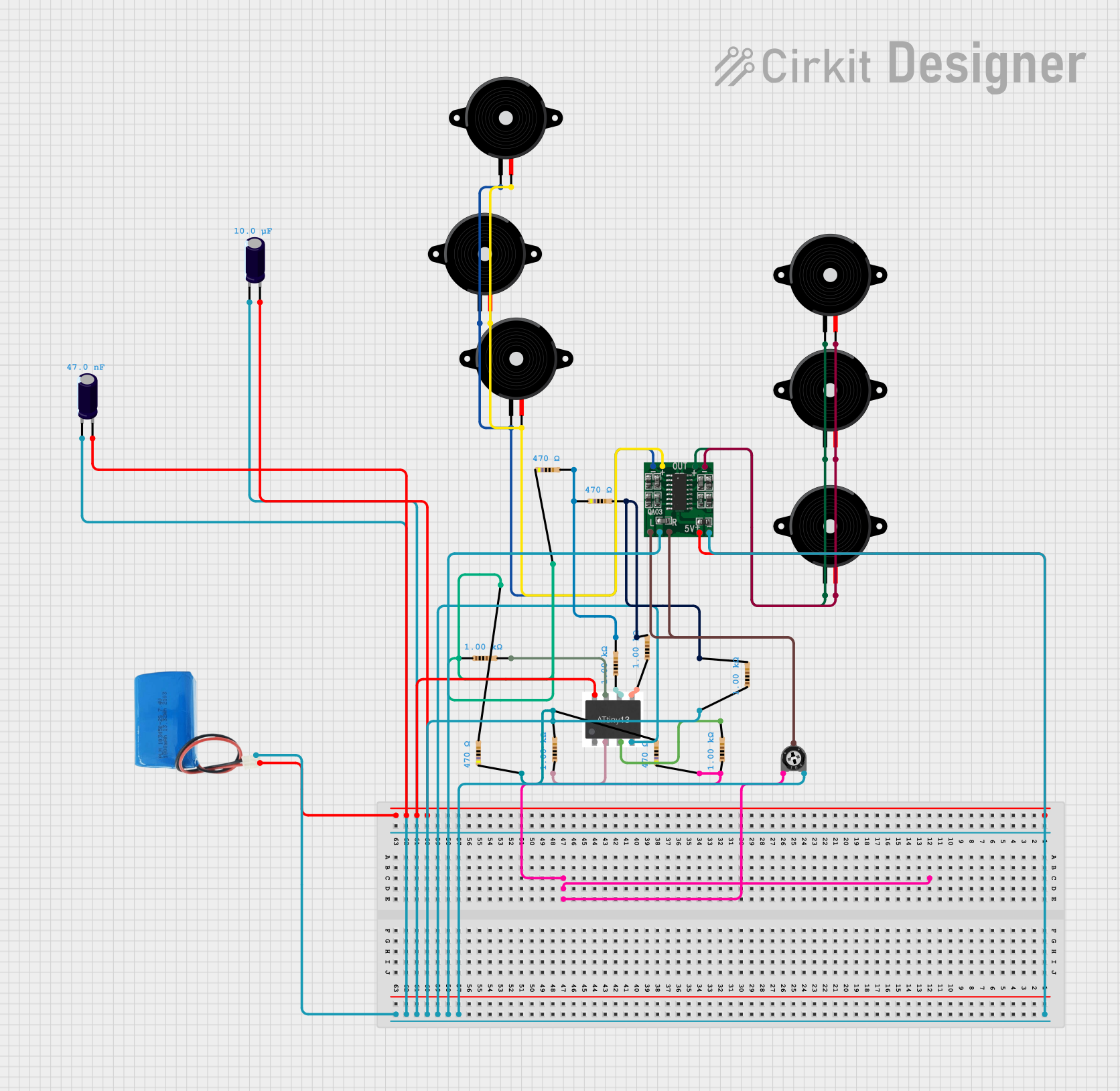
 Open Project in Cirkit Designer
Open Project in Cirkit DesignerExplore Projects Built with Mini Audio Amplifier 5W

 Open Project in Cirkit Designer
Open Project in Cirkit Designer
 Open Project in Cirkit Designer
Open Project in Cirkit Designer
 Open Project in Cirkit Designer
Open Project in Cirkit Designer
 Open Project in Cirkit Designer
Open Project in Cirkit DesignerCommon Applications
- Portable speaker systems
- DIY audio projects
- Embedded systems with audio output
- Audio enhancement for small devices
- Educational electronics projects
Technical Specifications
The following table outlines the key technical details of the DROK PAM8406 Mini Audio Amplifier:
| Parameter | Value |
|---|---|
| Manufacturer | DROK |
| Part ID | PAM8406 |
| Output Power | 5W (per channel, stereo output) |
| Operating Voltage | 5V DC |
| Operating Current | 1A (typical) |
| Efficiency | Up to 90% |
| Audio Channels | Stereo (2 channels) |
| Signal-to-Noise Ratio | ≥ 90 dB |
| Total Harmonic Distortion (THD) | ≤ 0.1% |
| Input Impedance | 10 kΩ |
| Output Impedance | 4Ω to 8Ω |
| Dimensions | 30mm x 22mm x 10mm |
Pin Configuration and Descriptions
The PAM8406 Mini Audio Amplifier has the following pin configuration:
| Pin Name | Description |
|---|---|
| VCC | Power supply input (5V DC) |
| GND | Ground connection |
| L_IN | Left audio input signal |
| R_IN | Right audio input signal |
| L_OUT+ | Positive output for the left speaker |
| L_OUT- | Negative output for the left speaker |
| R_OUT+ | Positive output for the right speaker |
| R_OUT- | Negative output for the right speaker |
Usage Instructions
How to Use the Component in a Circuit
- Power Supply: Connect a stable 5V DC power supply to the
VCCandGNDpins. Ensure the power source can provide at least 1A of current. - Audio Input: Connect the left and right audio input signals to the
L_INandR_INpins, respectively. These signals can come from an audio source such as a smartphone, MP3 player, or microcontroller with an audio output. - Speaker Connection: Connect the left speaker to the
L_OUT+andL_OUT-pins, and the right speaker to theR_OUT+andR_OUT-pins. Use speakers with an impedance of 4Ω to 8Ω for optimal performance. - Volume Control (Optional): If the amplifier module includes a potentiometer, use it to adjust the volume. Otherwise, control the input signal amplitude to manage the output volume.
Important Considerations and Best Practices
- Heat Dissipation: Although the PAM8406 is highly efficient, ensure proper ventilation to avoid overheating during prolonged use.
- Speaker Impedance: Use speakers with an impedance of 4Ω to 8Ω to prevent damage to the amplifier.
- Input Signal Levels: Avoid overdriving the input signal to prevent distortion or damage to the amplifier.
- Power Supply: Use a regulated 5V DC power supply to ensure stable operation and minimize noise.
Example: Connecting to an Arduino UNO
The PAM8406 can be used with an Arduino UNO to play audio signals. Below is an example of how to generate a simple tone using the Arduino and output it to the amplifier:
/*
Example: Generating a tone with Arduino and PAM8406 Mini Audio Amplifier
- Connect the Arduino's PWM pin (e.g., pin 9) to the L_IN or R_IN pin of the amplifier.
- Ensure the amplifier is powered with 5V DC and connected to speakers.
*/
const int audioPin = 9; // PWM pin connected to the amplifier's audio input
void setup() {
pinMode(audioPin, OUTPUT); // Set the audio pin as an output
}
void loop() {
// Generate a 1 kHz tone for 500 ms
tone(audioPin, 1000, 500);
delay(1000); // Wait for 1 second before repeating
}
Note: Use a capacitor (e.g., 10 µF) in series with the audio input to block DC offset from the Arduino's PWM signal.
Troubleshooting and FAQs
Common Issues and Solutions
No Sound Output:
- Verify that the power supply is connected and providing 5V DC.
- Check the audio input connections and ensure the signal source is active.
- Ensure the speakers are properly connected to the output pins.
Distorted Sound:
- Reduce the input signal amplitude to avoid overdriving the amplifier.
- Check the speaker impedance; ensure it is within the 4Ω to 8Ω range.
- Verify that the power supply is stable and not introducing noise.
Overheating:
- Ensure proper ventilation around the amplifier module.
- Avoid operating the amplifier at maximum power for extended periods.
Low Volume:
- Increase the input signal amplitude or adjust the volume control (if available).
- Verify that the speakers are functioning correctly.
FAQs
Q: Can I use a 3.3V power supply with the PAM8406?
A: No, the PAM8406 requires a 5V DC power supply for proper operation.
Q: What is the maximum speaker power rating I can use?
A: The amplifier can drive speakers with a power rating of up to 5W per channel. Using higher-rated speakers is acceptable but may not utilize their full potential.
Q: Can I use the PAM8406 with a mono audio source?
A: Yes, you can connect a mono audio source to either the L_IN or R_IN pin and leave the other input unconnected.
Q: Is the PAM8406 suitable for battery-powered applications?
A: Yes, its high efficiency and low power consumption make it ideal for battery-powered devices. Use a 5V battery pack or a step-up converter if needed.